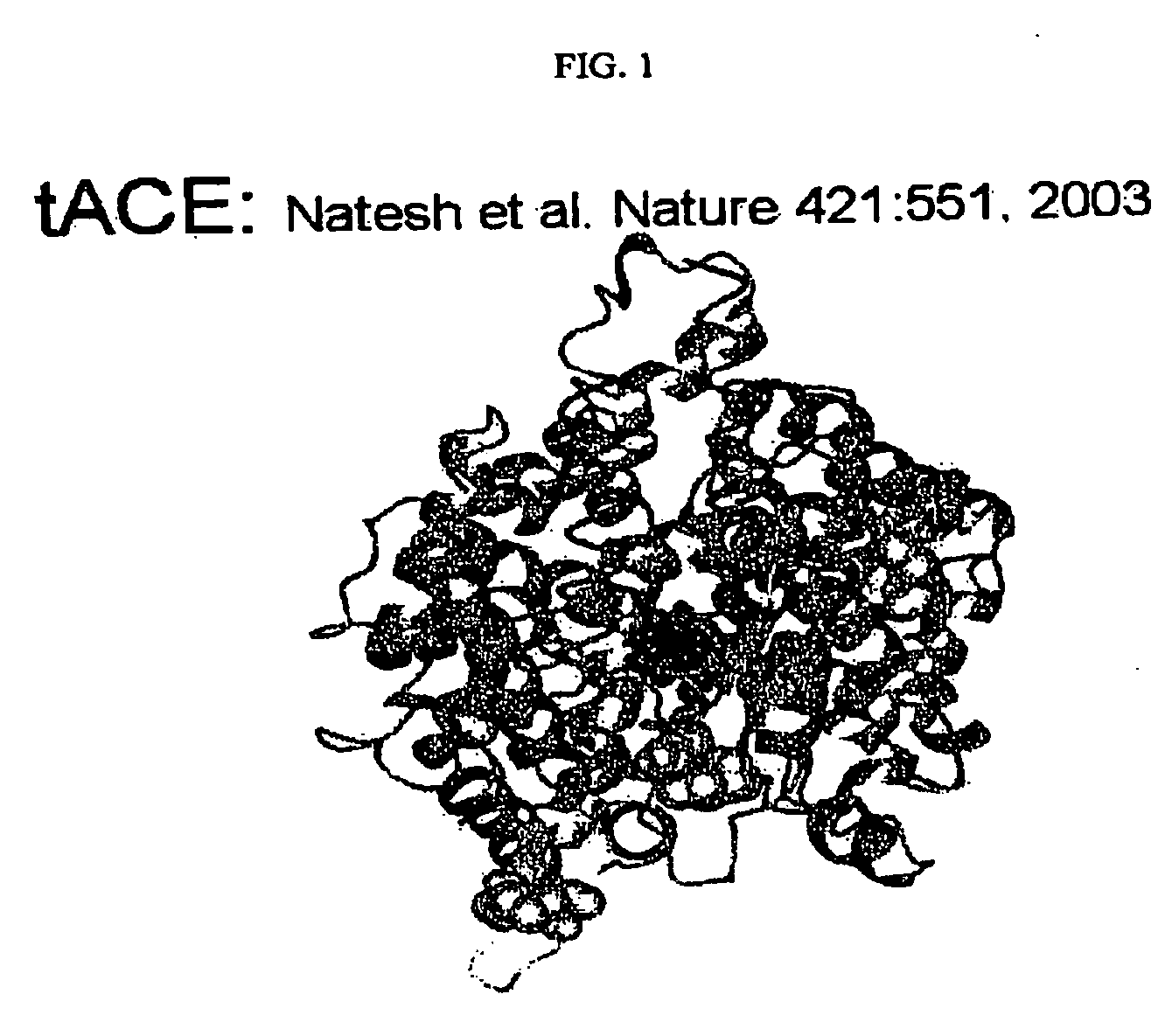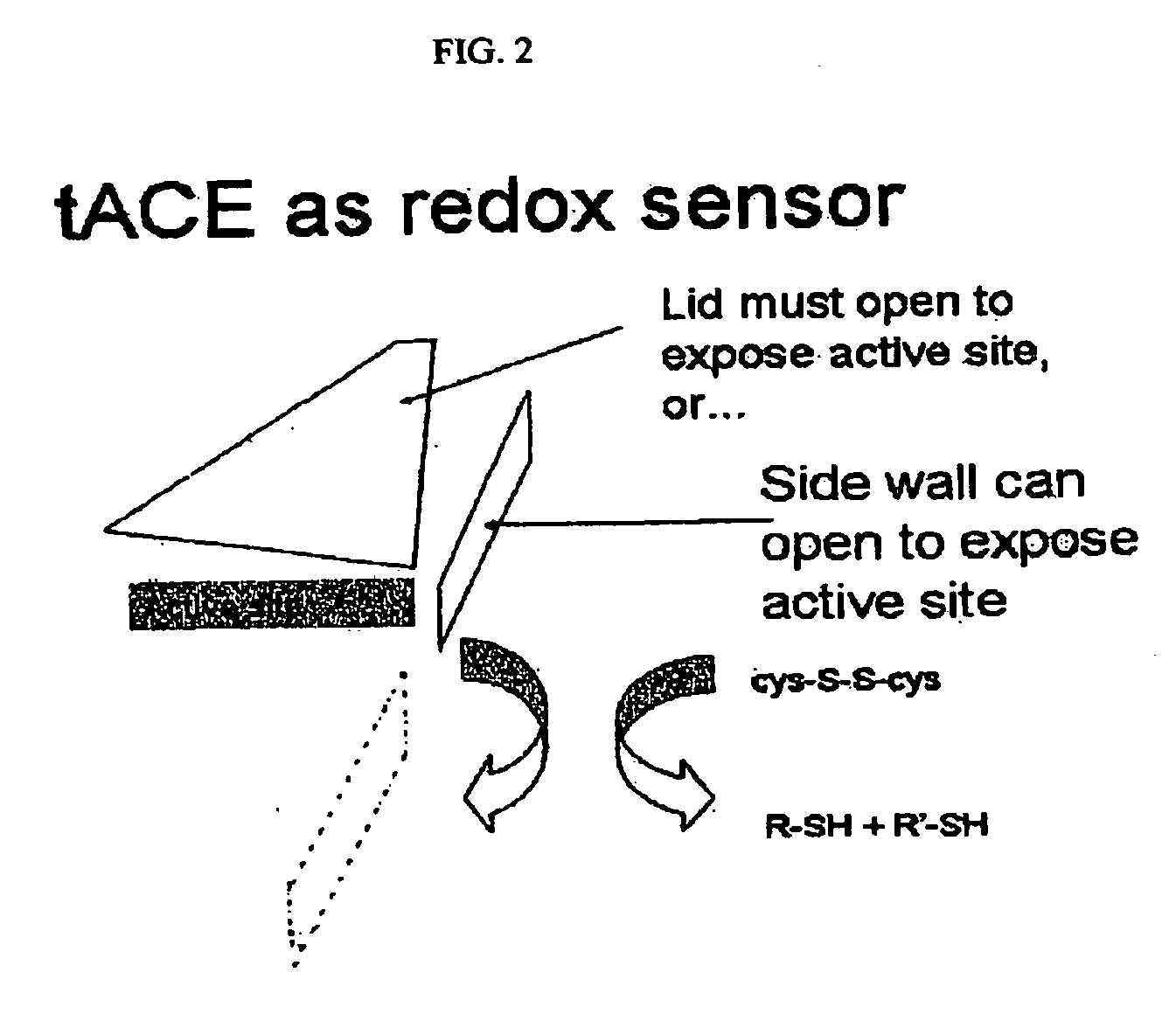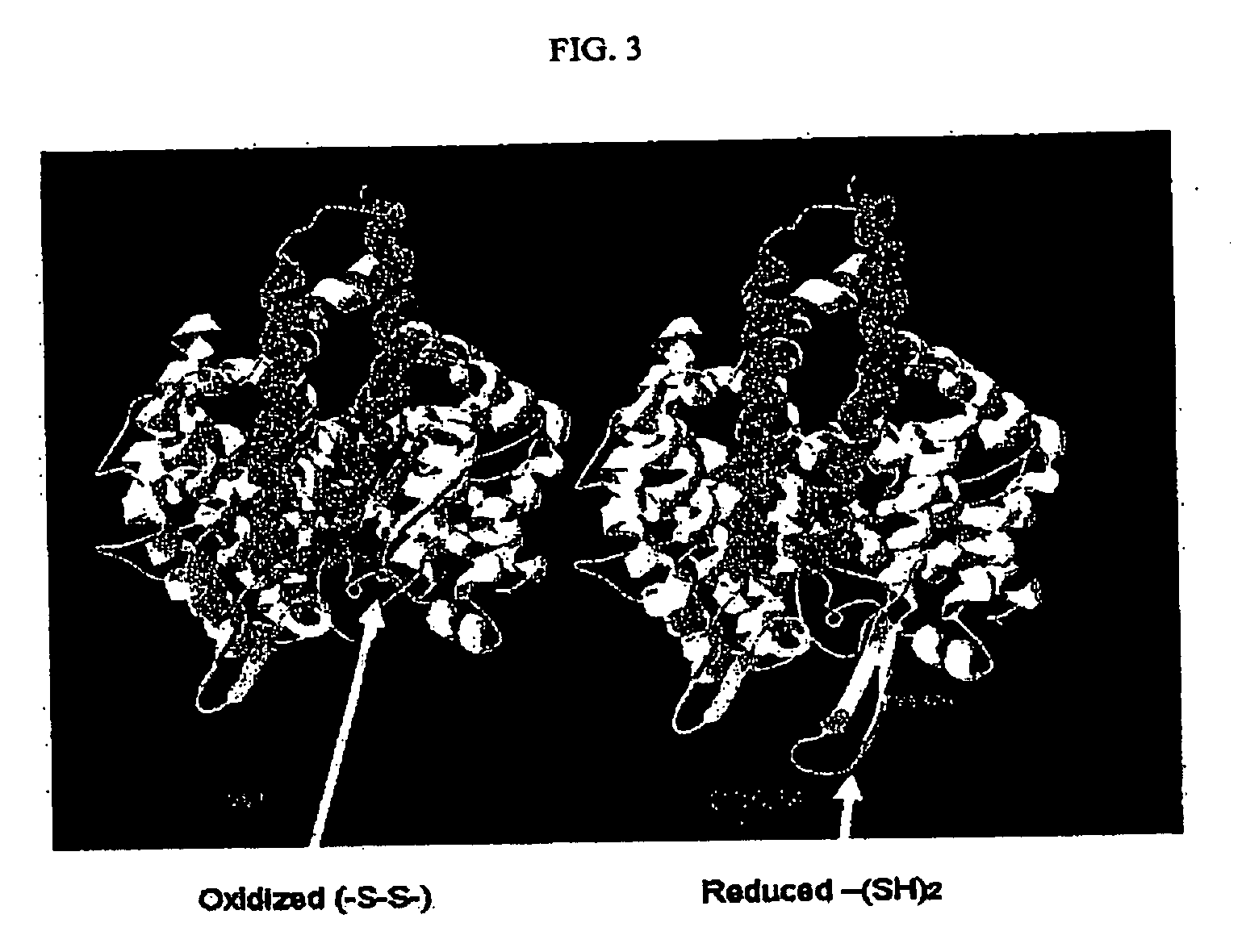Use of angiotensin receptor blockers (ARBs) to treat diseases associated with excess ACE
a technology of angiotensin receptor blocker and angiotensin, which is applied in the direction of drug composition, peptide/protein ingredient, peptide source, etc., can solve the problems of cysteine sulfuric acid formation, hypotheses that have not yet received much study, and dic often leads to death in patients with sepsis, shock, or malignant hypertension
- Summary
- Abstract
- Description
- Claims
- Application Information
AI Technical Summary
Problems solved by technology
Method used
Image
Examples
example 2
[0370] AT1 Receptor Blockers (“sartans”) for Severe Acute Respiratory Syndrome (SARS)
[0371] The reason why the coronavirus kills in SARS is because of the exuberant host response, not because of tissue damage by the virus. Patients die of high fever and respiratory insufficiency. The lung interstitium is invaded by inflammatory cells, and alveoli fill with an inflammatory exudate. As a result, alveoli cease to become gas-exchanging units. Even in the absence of alveolar exudate, the distance between the alveolus containing oxygen-rich air and oxygen-transporting hemoglobin in the red cells of pulmonary capillaries widens because of the interstitial inflammation. Gas exchange becomes grossly impaired.
[0372] Similarly, coronavirus does not cause fever; the body's immune response does. Both interleukin-1 (IL-1) and tumor necrosis factor-α (TNF-α) are the pyrogens causing the high fever. But these interleukins are made by the host's T cells and antigen-presenting cells (APCs), includi...
example 3
[0386] I. Molecular Mechanism of Redox Sensing by ACE
[0387] Angiotensin I-converting enzyme (ACE) has a number of invariant cysteines, including a pair quite close to the “HEMGH” active site, as follows:
[0388] C127}
[0389] C135} 8 aa's “A”
[0390] C341}
[0391] C360} 19 aa's “B”
[0392] HEMGH 373-377 Zn++-binding active site
[0393] C488 “A”
[0394] C531}
[0395] C549) 18 aa's “B”
[0396] This pattern is repeated in both the N- and C-terminal domains of the duplicated enzyme, somatic ACE (sACE).
[0397] It is believed that with the duplication, the molecule achieved the ability to be a redox sensor. When oxidized, in the presence of oxygen, the cysteines become linked to form cystines, i.e. Cys—SH+Cys—SH→Cys—S—S—Cys (cystine) (reaction 1)
[0398] Since the molecular structure of sACE has not yet been solved, it is clearly impossible to say which cysteines are cross-linked under oxiding conditions. However, it is attractive to speculate that the cysteines separated by 18-19 aa's line up with their...
example 4
[0433] Torticollis appears to involve excessive sympathetic nervous discharge from cervical nerves to neck muscles. Imbalance in nerve firing results in a twisting of the neck (torticollis' meaning in Latin) to one side.
[0434] Nerve firing is excessive often because of inflammation. Other associations are with trauma, and genetics (e.g. family history of epilepsy). The disease's predominance among women between 30 and 60 suggests an autoimmune origin for the most common form of torticollis.
[0435] Here, the use of an ARB is suggested, especially for patients with torticollis and normal or low blood pressure. An ideal ARB might be eprosartan, since it blocks angiotensin II type 1 receptors on both sympathetic pre-synaptic nerve terminals and post-synaptic muscle cells. A starting dose for a patient with low blood pressure (below 100 mm Hg systolic) might be 100-150 mg po qhs (eprosartan is available commercially as 400 and 600 mg tablets; the starting dose would be ¼ of a tablet; pi...
PUM
| Property | Measurement | Unit |
|---|---|---|
| Exposure limit | aaaaa | aaaaa |
Abstract
Description
Claims
Application Information
 Login to View More
Login to View More - R&D
- Intellectual Property
- Life Sciences
- Materials
- Tech Scout
- Unparalleled Data Quality
- Higher Quality Content
- 60% Fewer Hallucinations
Browse by: Latest US Patents, China's latest patents, Technical Efficacy Thesaurus, Application Domain, Technology Topic, Popular Technical Reports.
© 2025 PatSnap. All rights reserved.Legal|Privacy policy|Modern Slavery Act Transparency Statement|Sitemap|About US| Contact US: help@patsnap.com



